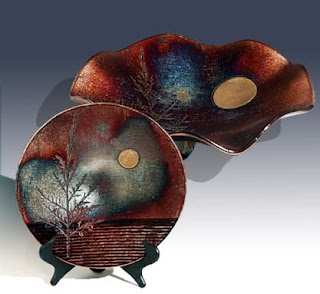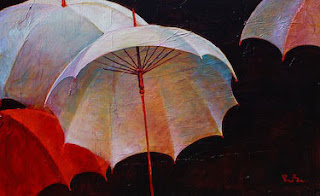 “Using the palette knife, Howard Behrens captured not only the softness of clouds, but also the boldness of mountains, the vibrancy of flowers, and the strength of water. Behrens moved the palette knife furiously as he applied deep, rich color in many layers to achieve dimension and mood. Behrens' skill with this instrument earned him recognition as America's leading palette knife artist. Behrens was also a classicist in his approach to composition so that there was plenty of room for the eye to rest and the imagination to wander, touring distant horizons around the world taking in crystal coves, wispy palms, pink villas, and stunning overlooks in the artist's paintings of these exotic places.”
“Using the palette knife, Howard Behrens captured not only the softness of clouds, but also the boldness of mountains, the vibrancy of flowers, and the strength of water. Behrens moved the palette knife furiously as he applied deep, rich color in many layers to achieve dimension and mood. Behrens' skill with this instrument earned him recognition as America's leading palette knife artist. Behrens was also a classicist in his approach to composition so that there was plenty of room for the eye to rest and the imagination to wander, touring distant horizons around the world taking in crystal coves, wispy palms, pink villas, and stunning overlooks in the artist's paintings of these exotic places.”After visiting Giverny, France, he had created a "Tribute to Monet" series that was exhibited at the Embassy of France in Washington, D. C. As an official artist for the 2002 Winter Olympics, Behrens' painting, "In Motion," was featured at the games. The artist's works are in the permanent collections of many museums. To celebrate romance with Behrens, a poet sculpting paint on canvases that are alive with color, is to join him on a romance with the sun that will never end.
Early on a Sunday morning, I called Howard at his hotel and picked him up to visit Duke Gardens. The objective was to get there early enough for a full range of morning sun. He had his camera and at least 10 rolls of film. I asked him how he could paint the various aspects of the sun and he told me that he had to experience it, capture it on film and then try as best he cold to replicate it. He didn’t want to create something that nature couldn’t produce with sunlight. I quickly learned that that meant crawling through bushes and waiting 10 minutes to capture a spectacular “moment” in time as the sun colored leaves a certain way. He had the camera going with rapid shots and showed me how to find unusual locations and positions to see Duke Gardens in a “whole new light”. He then painted scenes from that day in a Duke Garden series of eight originals reminiscent of his visit to Giverny France. "I'm an expressionist. I like to use color and dramatic, long areas of light and dark. Sunlight makes things more intense than they are. …………………….. It's no accident that nearly all my paintings in the last twenty years are studies in sunlight, the interplay between sunlight and shadow. We all go through dark times, divorce, bad business deals, or health problems. But life is so good. We are so blessed, so fortunate in this country. I guess I'm just an optimist."
Considered the master of the palette knife technique, Behrens perfected the use of this flat triangular metal tool that has more in common with a putty knife than a paintbrush. An instrument that is rather unyielding and inflexible, particularly when compared to the soft flexibility of brushes, the palette knife gave Behrens the artistic freedom he was looking for. "With brushes, I couldn't get enough paint down fast enough. Palette knife painting forces me to be free, spontaneous, and allows me to work fast. I don't lose the creative energy that inspired me in the first place," Behrens says. "When I started painting with the knife, I no longer belabored painstaking details."

























